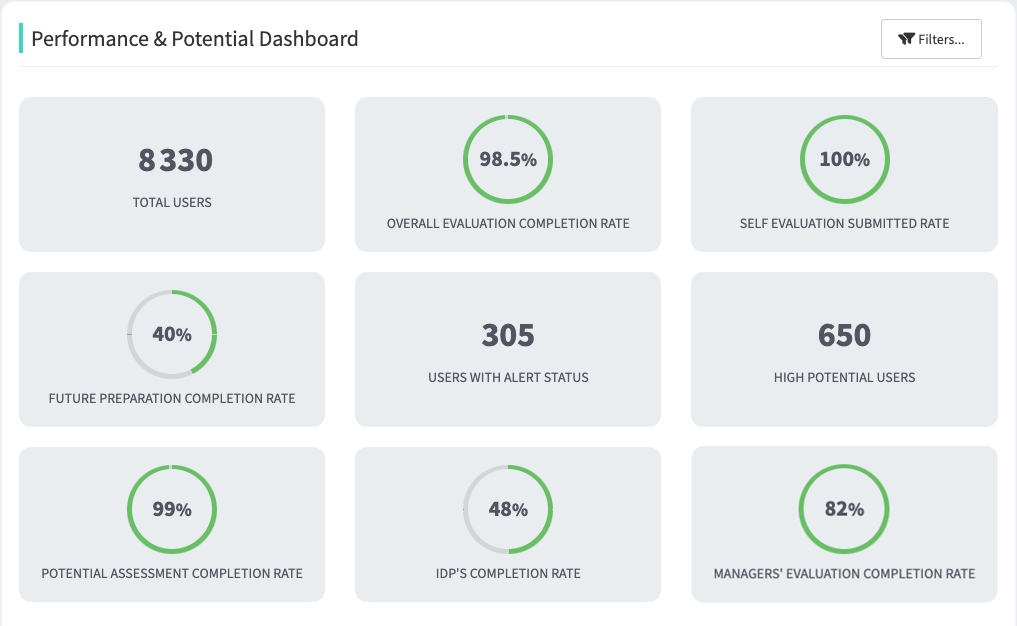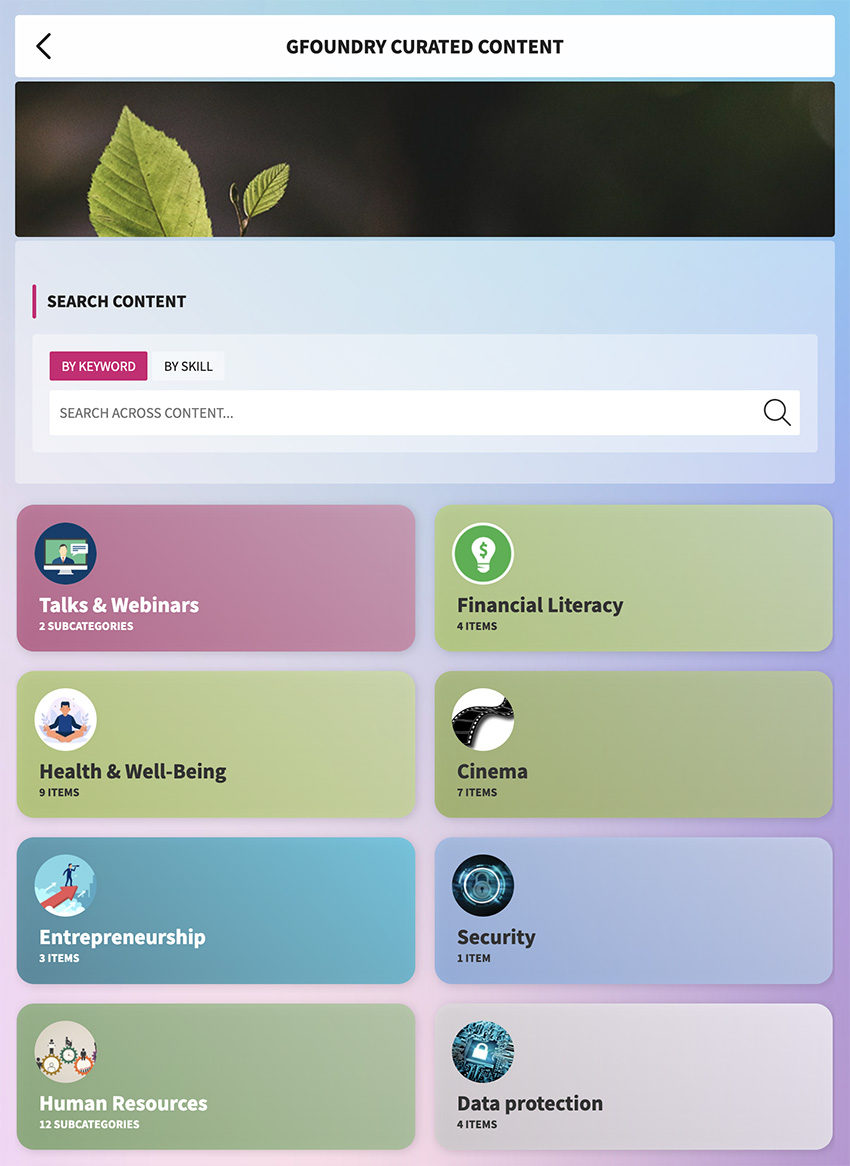Welcome to our handy guide to boost employee engagement. In this post, we’ll share helpful tips and methods to enhance engagement, foster a friendly workplace, and increase productivity and success in your organization.

What is Employee Engagement?
Employee engagement is about how dedicated and committed employees are to their work and the company. Why is it important? Engaged employees are more innovative and focused on customers, leading to higher profits and less employee turnover.
Whose Job Is Employee Engagement?
While leaders play a key role in boosting engagement, it’s not only their job. HR teams, managers, and employees themselves all have crucial roles. HR makes engagement-boosting policies and programs, managers lead and promote it, and each person must choose to be engaged.
What are the 3 dimension of employee engagement?
Employee engagement models vary, but one common one is William Kahn’s 3 dimensions model, which breaks down engagement into:
- Physical engagement: The employee’s participation in work.
- Cognitive engagement: The employee’s focus on work tasks.
- Emotional engagement: The employee’s positive feelings about their work and company.
Factors Impacting Employee Engagement
Employee engagement is influenced by various factors, both internal and external to the organization. Opportunities for growth and development, such as training programs, career advancement, and skill-building initiatives, play a significant role in keeping employees engaged in their roles long-term. A supportive work environment, where employees feel valued, recognized, and empowered, fosters a sense of loyalty and commitment. Additionally, work-life balance and flexible policies that accommodate employees’ personal needs contribute to higher engagement levels.
Why Current Programs Aren’t Improving Employee Engagement
Many programs fail because they’re too general, not catering to specific employee needs. They concentrate on perks, not engagement. Real engagement comes from internal motivation, not external rewards.
According to Gallup, the main reason workplace engagement programs fail is that engagement is considered an HR matter. Leaders, managers, and workers don’t own or understand it.
Here are the top 10 drivers of employee engagement, based on employee engagement trends research:
- Sense of purpose
- Meaningful work
- Trust in leadership
- Clear goals and expectations
- Regular feedback
- Opportunities for growth and development
- Positive work environment
- Work-life balance
- Compensation and benefits
- Employee recognition
 Strategies for Enhancing Employee Engagement
Strategies for Enhancing Employee Engagement
Promoting a Positive Work Culture
Fostering a positive work culture is key for high engagement. Encourage open communication and regular feedback to make employees feel valued. Recognizing employees’ efforts boosts morale and promotes teamwork and productivity.
Creating a positive work culture
A positive work culture is vital for an engaged, motivated workforce. Encouraging open communication and feedback builds trust. Recognizing and appreciating employees’ efforts boosts morale and creates a supportive atmosphere.
Importance of employee recognition
Recognizing employees boosts engagement and motivation. When employees’ hard work is appreciated, they feel more valued. Recognition can take many forms, like praise, commendations, or appreciation events. Know more about GFoundry’s Recognition solution.
Effective communication for engagement
Clear communication is key for engagement, promoting trust and clarity. Two-way communication, where employees can share their ideas and feedback, makes them feel heard and valued, clarifying their roles and reducing confusion. Read more about Internal Communication GFoundry’s solutions.
Implementing Work-Life Balance Initiatives
Recognizing the importance of work-life balance and implementing flexible policies can significantly impact employee engagement. Encourage employees to maintain a healthy work-life balance by offering remote work options, flexible schedules, and paid time off. A well-rested and balanced workforce is more likely to be energized and focused, leading to increased productivity and job satisfaction. Keep on reading: Employee well-being – the complete guide
Strategies for Enhancing Employee Performance
Engaged employees are often the most dedicated and productive members of any organization. When employees are genuinely engaged, they’re not just working for a paycheck.
They’re working because they believe in the company’s mission and feel a strong connection to its values.
Improving employee performance isn’t just about getting more out of your staff – it’s about giving more to them, in terms of direction, motivation, and the right tools.
Invest in Continuous Training and Development
- Regular Workshops and Courses: Offer regular workshops and training courses tailored to your employees’ roles. This helps in keeping their skills sharp and updated.
- Using GFoundry for Training and Development: GFoundry platform offers an array of training modules that can be customized to fit your needs. The platform can help streamline the learning process, making it engaging and interactive, thus ensuring better knowledge retention.
- Read more about GFoundry’s Development and Training solution.
Invest in Performance & Potential Evaluation
In the ever-evolving landscape of businesses, it’s not just about assessing how well an employee is performing now, but also how much potential they have to grow and adapt in the future.
Performance evaluations provide a snapshot of an employee’s current abilities and contributions, while potential evaluations shed light on their capacity for future roles and responsibilities.
Merging these two evaluations offers a holistic view, aiding in strategic decision-making, from promotions to training programs.
Let’s dive into how to effectively invest in both.
 The Importance of Dual Evaluations: Performance & Potential
The Importance of Dual Evaluations: Performance & Potential
- Objective Feedback: Having systematic evaluations helps provide objective feedback to employees. It demystifies the areas they excel in and where they need improvement, creating a clearer path for personal and professional growth.
- Future-proofing the Organization: By identifying those with high potential, companies can ensure they’re cultivating the next generation of leaders and innovators, positioning the business for long-term success.
Steps to Effective Performance & Potential Evaluation
- Set Clear Evaluation Criteria: Before you begin any evaluation, define what ‘performance’ and ‘potential’ mean in the context of your organization. These criteria ensure consistency across all evaluations
- Use 360-Degree Feedback: Incorporate feedback from peers, subordinates, and superiors. This comprehensive feedback system provides a rounded view of an employee’s performance and potential.
- Consider Soft Skills: While technical skills are crucial, don’t forget soft skills. Leadership, adaptability, and teamwork are often indicators of an employee’s potential to grow and take on bigger roles.
- Leverage Technology and Platforms: There are platforms designed to assist with evaluations. These tools can streamline the process, ensure objectivity, and offer insights that might be overlooked in manual evaluations.
Integrating GFoundry in the Evaluation Process
- Customized Evaluation Templates: GFoundry can help in creating customized templates for evaluations, ensuring that the process adheres to the company’s specific needs and values.
- Data-Driven Insights: With GFoundry, you can collect and analyze data, deriving actionable insights from the evaluations. This data-centric approach can highlight trends, pinpointing areas of improvement or showcasing where employees shine.
- Continuous Feedback Loop: GFoundry can be set up to provide continuous feedback, allowing employees to be in the know, adjust their strategies, and continually work towards improvement. This dynamic feedback mechanism fosters a culture of continuous learning and adaptation.
Read more here: Manage the Performance Evaluation and Potential of your employees from A to Z with GFoundry
 How can I engage different types of employees?
How can I engage different types of employees?
By understanding different employee types and their needs, you can create an engaged, motivated workplace. This will increase productivity, creativity, and customer satisfaction.
To create an engaged workplace, you need to understand employees’ individual needs. Provide them with the opportunities and resources they need to be successful.
Here are some specific examples of how you can engage different types of employees:
- Employees driven by purpose: Offer them opportunities to work on projects that align with their passions and the company’s mission and values.
- Employees driven by challenges: Provide learning opportunities and new challenges. Give them feedback and coaching for growth.
- Employees driven by relationships: Foster a positive, supportive work environment. Encourage collaboration and teamwork.
How to engage employees from different generations?
Understanding the different generations of employees in the workforce is crucial to engagement. Each generation has its unique values and expectations.
- Baby Boomers (born 1946-1964) are typically motivated by job security and community. They value stability and loyalty, and often work long hours.
- Generation X (born 1965-1980) are usually motivated by work-life balance and advancement opportunities. They value flexibility and autonomy, often looking for creative jobs. Millennials (born 1981-1996) are typically motivated by purpose and social impact. They value diversity and inclusion, often seeking jobs where they can make a difference.
- Generation Z (born after 1996) are typically motivated by technology and innovation. They value collaboration and teamwork, often looking for jobs that use their creativity and problem-solving skills.
By understanding the different generations and their needs, you can create a workplace where everyone feels valued and engaged, leading to a more productive, creative, and innovative workforce.
Types of Workers in Terms of Engagement
Your company can have three types of employees based on engagement level:
- Engaged Employees These employees are enthusiastic, committed, and actively involved in their work. They don’t just do their jobs; they strive for excellence and help the company grow. They take the initiative, propose innovative ideas, and create a positive and collaborative work atmosphere.
- Not Engaged Employees These employees are ‘checked out.’ They do the bare minimum and show little enthusiasm for their work. They often feel unappreciated or unchallenged, leading to a weak commitment to their roles.
- Actively Disengaged Employees These employees aren’t just unhappy at work; they can harm the company’s culture and productivity. They often feel dissatisfied with their roles, managers, or the company overall, which can stem from various sources. Actively disengaged employees can drain morale and productivity, so addressing their concerns should be a priority.
 Transforming Employee Engagement with GFoundry Platform
Transforming Employee Engagement with GFoundry Platform
How can GFoundry help me promote employee engagement?
GFoundry can help promote employee engagement because it offers a comprehensive set of tools and features designed to enhance employee development, foster a positive work culture, and create personalized learning experiences.
Personalized learning with GFoundry
One standout feature of GFoundry is personalized learning. It gives learning materials based on each employee’s needs and style. This means employees get the right training. This helps them stay interested and remember more. By having their own learning path, employees feel more in control. This makes them want to keep getting better.
Gamification for boosting engagement
GFoundry leverages gamification elements to enhance the learning experience and boost engagement. By incorporating game-like elements, such as badges, points, and leaderboards, GFoundry makes learning fun and interactive. Gamification taps into employees’ competitive nature and desire for achievement, driving them to actively participate in learning activities and complete training modules.
Tailoring GFoundry to Your Organization
GFoundry is flexible. You can adjust it to match your company’s special goals and problems. It works for both small startups and large businesses. GFoundry can change as needed. It can easily blend with your current systems and expand with your company. This helps you consistently give great engagement experiences to your employees.
Customizing GFoundry for your organization
GFoundry’s flexibility allows organizations to customize the platform to align with their unique goals, culture, and values. Whether you’re a startup, a multinational corporation, or somewhere in between, GFoundry can be tailored to fit your specific requirements. From branding and interface customization to content curation and reporting preferences, GFoundry can adapt to your organization’s needs, ensuring a seamless and personalized employee engagement experience.
Scalable employee engagement platform
GFoundry grows with your company. This platform can handle more employees and more training as you grow. If you’re adding team members, starting new departments, or going global, GFoundry can easily adjust. Its ability to scale ensures that you can keep offering top-notch engagement to your employees. This holds true no matter your company’s size or how complex it is.
Read more: How to improve Employee Engagement and Performance? Your Ultimate Guide
 How to measure employee Engagement?
How to measure employee Engagement?
To understand how much your employees care about your organization and its goals, you need both numbers and stories. Here are some ways to measure how engaged your employees are:
1) Employee Engagement Surveys
Surveys are one of the most common methods to measure employee engagement. Tools such as Gallup’s Q12, the Utrecht Work Engagement Scale, or custom surveys can be used.
2) Pulse Surveys
Pulse surveys are fast, frequent updates to check engagement. These small surveys watch for shifts in employee feelings or happiness. This way, managers can handle problems fast. Know more about the pulse survey solution provided by GFoundry.
3) One-on-One Interviews
Managers or HR folks can do one-on-one talks. This can give deeper knowledge about how an employee feels about their job, the company, and how engaged they are.
4) Focus Groups
Like one-on-one talks, focus groups mean a leader talks with a few employees. This can show us the group’s work experience. It can help us understand how engaged the team is in the company.
5) Noticing Behavior
Leaders can look at how employees act to tell if they’re engaged. Happy employees often take the lead, join in with the team, and handle tough times well.
6) Interviews When Leaving
When someone quits, a final talk can give helpful clues. It might not show current team feelings, but it can highlight problems to fix.
7) Using Online Tools
Tools like GFoundry can give helpful data about how employees use it and interact. This can hint at how engaged they are.
8) Looking at Work Results
If workers are more engaged, they often do a better job. Checking work results can show how engaged workers are. GFoundry can assist with this. Now more about orur Performance Evaluation and Career Management solution.
GFoundry’s advanced analytics and reporting features provide valuable insights into your employees’ engagement levels. By measuring engagement metrics, you can identify areas for improvement and track the impact of your engagement initiatives. These data-driven insights enable you to make informed decisions and fine-tune your strategies to maximize employee engagement and overall organizational success.
 A brief overview of Employee Engagement
A brief overview of Employee Engagement
At its core, employee engagement is about the emotional commitment and enthusiasm that employees feel towards their work and organization. It’s not just about satisfaction or happiness; it’s about a genuine connection to one’s work and colleagues. Gallup provides a comprehensive look at this vital concept.
William Kahn, a pioneer in the field, defined employee engagement as the harnessing of organizational members’ selves to their work roles. It’s a multifaceted concept that encompasses motivation, alignment with company goals, and even personal well-being.
But why is employee engagement so important? Engaged employees are more productive, contribute positively to business results, and play a crucial role in customer satisfaction. They’re the lifeblood of a thriving organization, and their impact can be felt across all levels of a business, from the manufacturing floor to healthcare settings.
Measuring employee engagement is a complex task. Surveys are a common method, providing valuable metrics and insights into the organizational climate. But there are also alternative ways to gauge engagement, such as one-on-one interviews, observation, and feedback mechanisms. Forbes offers some innovative methods to explore.
Increasing employee engagement is not a one-size-fits-all endeavor. In sectors like healthcare, strategies might include recognition, clear communication, and fostering a positive work environment. In manufacturing, engagement might be driven by safety, productivity, and innovation. And let’s not forget remote employees, who require specific strategies like regular communication and virtual team-building activities. Harvard Business Review has some great insights on this topic.
Today, various software and tools are available to facilitate employee engagement. From platforms for surveys to tools for recognition, these technologies can be customized to fit an organization’s specific needs. They can even be integrated with existing systems like ERP and business intelligence platforms, making them a versatile asset in the modern workplace.
Leadership, too, plays a vital role in fostering employee engagement. Effective leaders create a culture where employees feel valued, motivated, and aligned with organizational goals. HR strategies can be implemented to raise levels of engagement, and the impact on business performance can be profound.
In brief summary, employee engagement is more than a buzzword; it’s a critical factor in organizational success. From understanding what it is (and isn’t) to recognizing its multifaceted nature, organizations must invest in strategies, tools, and leadership to create a thriving and engaged workforce. The benefits are clear, and the path forward is exciting and full of potential.
 Here are some of the most common questions about Employee Engagement and Performance
Here are some of the most common questions about Employee Engagement and Performance
- How does employee engagement affect performance?
Employee engagement directly influences performance by boosting productivity, enhancing creativity, and fostering a more collaborative work environment. Engaged employees are more likely to be invested in their tasks and goals, leading to higher-quality work and fewer mistakes. - What is employee engagement and performance?
Employee engagement refers to the emotional and intellectual commitment an employee has towards their organization, role, and team. Performance, on the other hand, relates to the efficiency and effectiveness with which an employee executes tasks and contributes to organizational goals. - What is the link between employee engagement and performance?
The link between employee engagement and performance is often demonstrated through increased productivity, reduced turnover, and higher employee satisfaction. Engaged employees tend to be more focused and committed, which directly translates into improved performance metrics. - Why is employee engagement important to performance?
Employee engagement is crucial to performance because it creates a virtuous cycle of improvement. Engaged employees are motivated to excel, which boosts their performance; improved performance then leads to more engagement as employees find fulfillment in their achievements. - How can HR measure employee engagement?
HR can measure employee engagement through a variety of methods including employee surveys, performance reviews, 360-degree feedback, and direct observations. Tools like engagement thermometers and advanced analytics platforms can also offer real-time insights. - What are the key indicators of high employee engagement?
Key indicators include high productivity, low absenteeism, proactive communication, strong peer relationships, and a demonstrated commitment to organizational goals and values. - How does employee engagement impact customer satisfaction?
Engaged employees are more likely to be attentive, proactive, and dedicated to providing excellent service, leading to higher levels of customer satisfaction and loyalty. - What strategies can HR employ to improve employee engagement?
Strategies may include regular feedback sessions, employee recognition programs, opportunities for career development, and fostering a strong organizational culture. - How does engagement vary across different roles within an organization?
Engagement can vary based on the nature of the work, level of autonomy, and team dynamics. For example, front-line employees might be highly engaged because of direct customer interaction, while back-office staff may require different kinds of motivation. - What is the relationship between employee engagement and employee retention?
Higher engagement levels are often correlated with lower turnover rates, as engaged employees are more likely to be satisfied in their roles and less likely to seek opportunities elsewhere. - How do remote work conditions affect employee engagement and performance?
Remote work can both positively and negatively affect engagement and performance. While it offers flexibility, it may also lead to feelings of isolation or disconnection if not managed effectively. - What role does leadership play in fostering employee engagement?
Leadership sets the tone for organizational culture and engagement. Effective leaders actively communicate, recognize achievements, and facilitate opportunities for professional growth. - How does organizational culture influence employee engagement?
A positive organizational culture that aligns with an employee’s values can greatly boost engagement. Conversely, a toxic culture can be a significant deterrent to engagement. - What are the long-term benefits of maintaining high employee engagement?
Long-term benefits include increased productivity, higher employee retention, improved organizational culture, and ultimately, a stronger bottom line. - How can technology be used to enhance employee engagement?
Technology can facilitate remote work, offer platforms for recognition and reward, and provide analytics for measuring engagement. Gamification and AI can also personalize experiences to boost engagement. - What role does feedback play in employee engagement?
Regular, constructive feedback can boost engagement by helping employees understand their strengths and areas for improvement, making them feel valued and heard. - How does employee engagement correlate with innovation within the organization?
Highly engaged employees are more likely to be proactive, take risks, and come up with innovative solutions, contributing to the organization’s growth and adaptability. - What are the financial implications of low employee engagement?
Low engagement can lead to reduced productivity, higher turnover, and increased recruitment costs, which all impact an organization’s financial performance. - What is the impact of employee engagement on team dynamics?
Engaged employees often contribute to a more cohesive, collaborative, and productive team environment. - Can employee engagement be too high? If so, what are the drawbacks?
Excessively high engagement could potentially lead to burnout, as employees may overextend themselves, neglecting work-life balance. - How does work-life balance contribute to employee engagement?
A balanced work-life environment allows employees to recharge, reducing stress and boosting engagement when they are working. - What are the most effective rewards and recognition programs for enhancing employee engagement?
Effective programs are often personalized, timely, and tied directly to specific achievements or behaviors that the organization wishes to encourage. - How can employee engagement initiatives be customized for different generational groups in the workforce?
Different generations may have varied preferences for communication, rewards, and career development. Customizing engagement initiatives to cater to these differences can be more effective.
Subscribe to GFoundry Newsletter: Weekly Insights on HR’s Most Pressing Topics
Keep on reading:
- Mastering Employee Turnover: The Ultimate Guide to Retaining Talent and Boosting Productivity
- The Metrics and Emotions: Analyzing Pulse Surveys’ Dual Power
- A Comprehensive Guide to the Impact, Benefits, and Future of Artificial Intelligence in HR
- HR Trends: What Will HR Look Like in 2024?
- Real-world OKR examples across different industries
- Employee Feedback guide with real examples
- What is the importance of Compensation and Benefits for employees?
- 7 Tips to prromote work-life balance
- Engaged Employees
- Employee well-being – the complete guide
- Recognition & Feedback
- Gamification
Ready to get started?
Take the next step and learn more about how GFoundry can help you.

 Strategies for Enhancing Employee Engagement
Strategies for Enhancing Employee Engagement The Importance of Dual Evaluations: Performance & Potential
The Importance of Dual Evaluations: Performance & Potential How can I engage different types of employees?
How can I engage different types of employees? Transforming Employee Engagement with GFoundry Platform
Transforming Employee Engagement with GFoundry Platform How to measure employee Engagement?
How to measure employee Engagement? A brief overview of Employee Engagement
A brief overview of Employee Engagement Here are some of the most common questions about Employee Engagement and Performance
Here are some of the most common questions about Employee Engagement and Performance